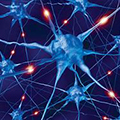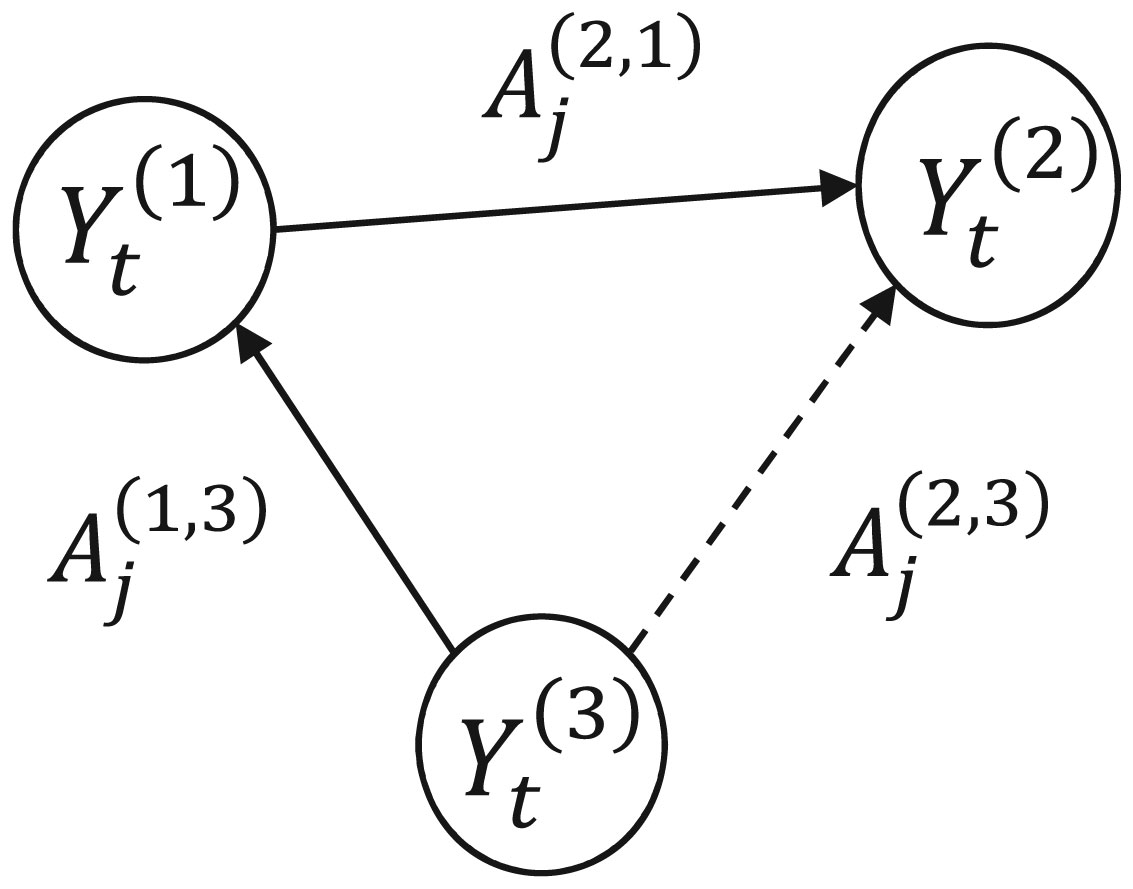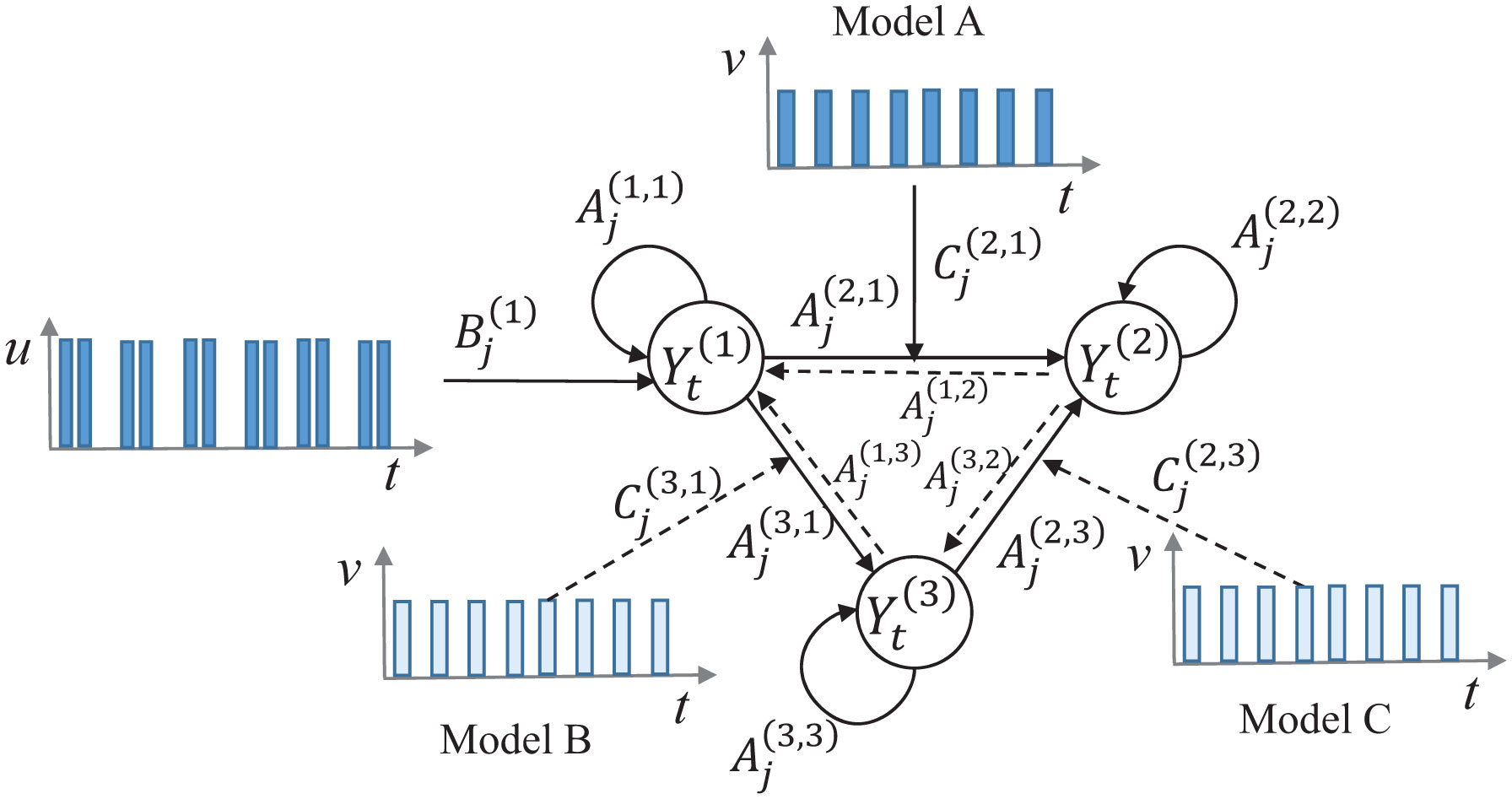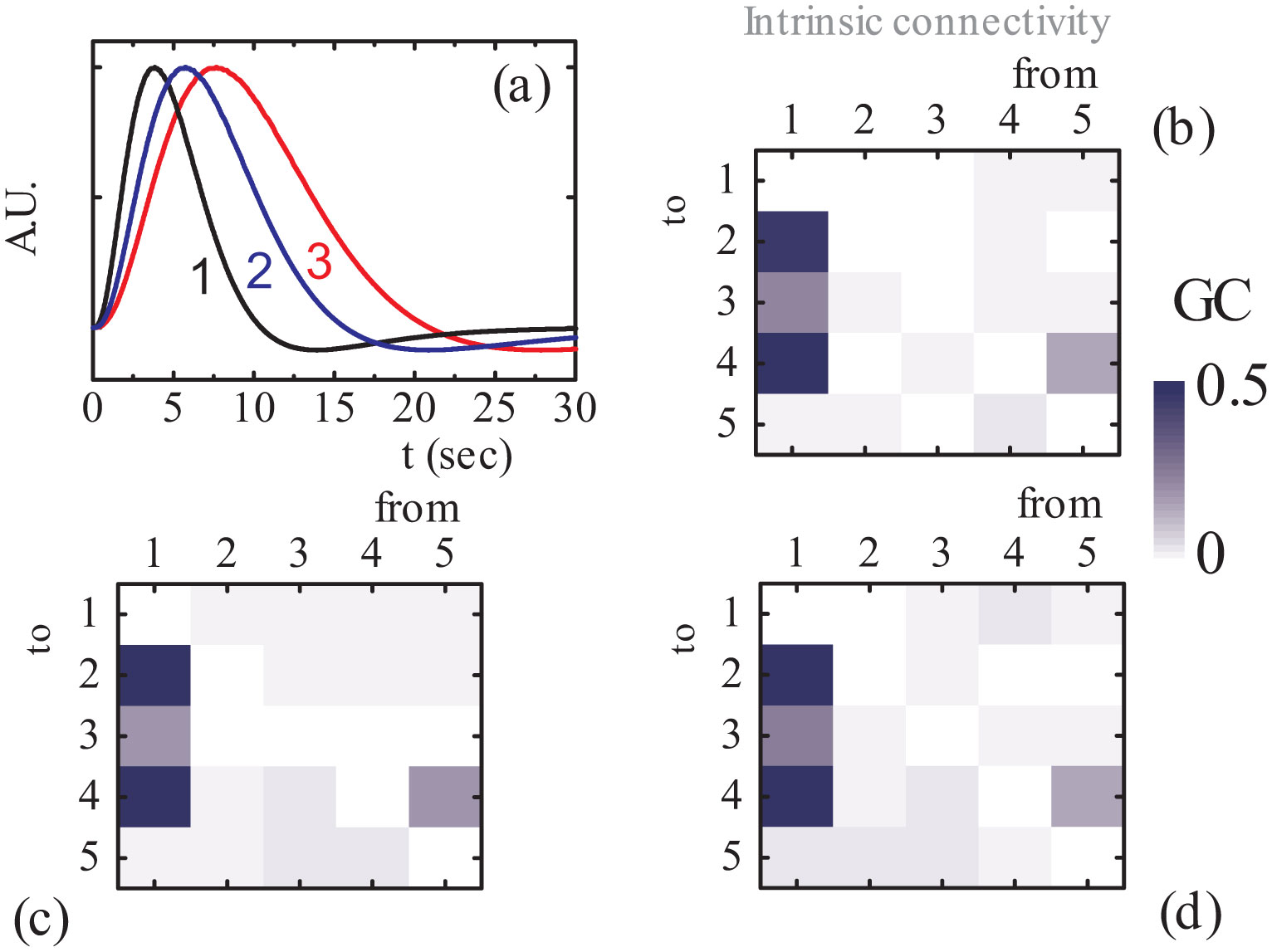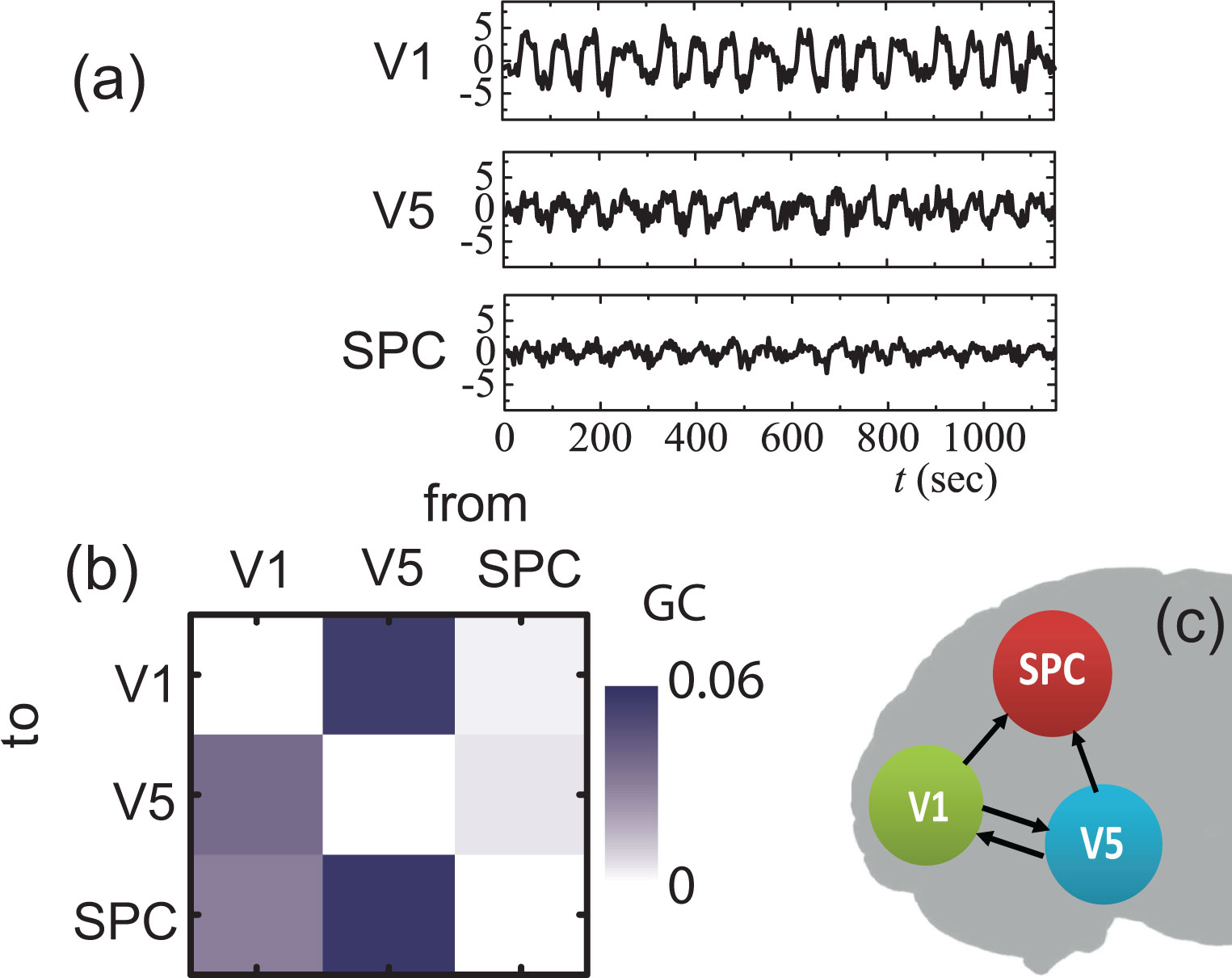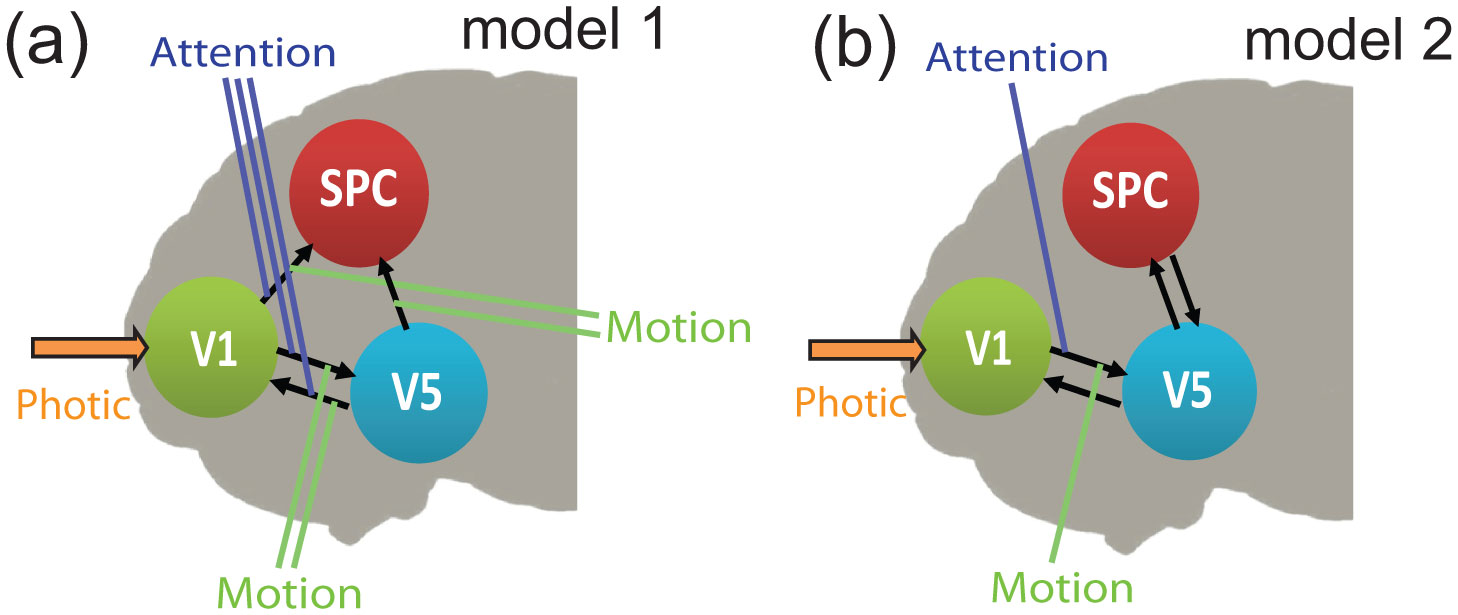1.
Introduction
In recent decades, there has been considerable focus on the control challenges associated with nonlinear systems, driven by the widespread occurrence of nonlinear behavior in modern control systems [1]. Various control strategies, including adaptive output feedback control, adaptive event-triggered control, adaptive backstepping control, and adaptive sliding mode control have been developed [2,3]. The backstepping control technique offers a systematic approach to tackling tracking control problems in nonlinear systems without the need to satisfy matching conditions. This technique involves breaking down the intricate nonlinear system into multiple subsystems and subsequently designing a virtual controller for each subsystem until the actual control law is derived [4]. In previous works, adaptive backstepping controllers and variable structure adaptive backstepping controllers were introduced to address the control problems of specific systems. However, for certain nonlinear systems, obtaining accurate dynamic models proves exceedingly challenging. To address this challenge, researchers have introduced neural networks (NNs) and fuzzy logic systems (FLSs) [5]. Given their ability to identify unknown nonlinear functions, the application of NNs and FLSs in the control of nonlinear systems has garnered significant interest and various studies in this domain have been conducted [6,7,8]. For example, an adaptive NN-based decentralized control approach has been formulated for interconnected nonlinear systems [9]. Additionally, an adaptive method has been reported for stochastic nonlinear systems by using fuzzy approximation and output feedback control [10]. However, it is important to clarify that the studies mentioned above did not consider the fault-tolerance aspect of the controlled system.
Actuators and sensors regularly experience operational disruptions and faults in real-world manufacturing environments, such as those involving flight control systems, satellite operations, and nuclear power facilities [11]. These faults can result in unsatisfactory system performance and, in severe cases, lead to instability. Ensuring system reliability and stability under all circumstances is crucial. As a result, it is crucial to devise an effective fault-tolerant control scheme that ensures the maintenance of stable and satisfactory control performance, even when faults are present [12]. Actuators ultimately age or breakdown entirely due to the increasing complexity and automation of modern control systems, particularly when they are subjected to demanding and prolonged continuous operations [13]. Actuator failures are common in many real-world applications, such as offshore ship-mounted cranes, two-stage chemical reactors and highly adaptable airplanes [14]. To minimize the negative impacts of faults on the system and get it as close to its pre-fault state as possible, fault-tolerant control is required. Adaptive control can simultaneously achieve optimal performance by dynamically modifying the controller design. As a result, combining fault-tolerant control with adaptive control has become a primary area of research to improve the security and dependability of industrial systems [15]. For instance, using the command filter technique, an adaptive fault-tolerant control issue for switched nonlinear systems has been reported [16]. Furthermore, an adaptive fault-tolerant control problem has been explored for a class of nonlinear large-scale systems under the impact of dead-zone nonlinearity [17]. In addition, under the influence of uncertainties in mismatched parameters and disturbances, an adaptive fault-tolerant control problem has been explored for nonaffine nonlinear systems [18]. A model-free adaptive fault-tolerant control technique, relying on NNs, has been documented for discrete-time nonlinear systems in the presence of sensor faults [19]. Despite these accomplishments, to the best of our knowledge, there has been no attention given to fault-tolerant control considering input delay in the existing literature.
Moreover, input delays can stem from the inherent characteristics of the plant or external factors within the system, such as computation time or sensor measurements [20]. This occurrence has the potential to result in a decline in system performance, or even induce instability [21]. Recent efforts have introduced various approaches to tackle adaptive control schemes for nonlinear systems grappling with input delays [22,23]. In [24], the authors have presented a NN-based adaptive control strategy for nonlinear systems facing state constraints and input delays. For single-input single-output uncertain systems with unmodeled dynamics and encompassing unknown constant time delays, an adaptive controller has been formulated using a backstepping design [25]. To address the adaptive fuzzy tracking control problem for nonlinear systems with input delays and output constraints, Pade approximation has been employed [26]. Furthermore, the exploration of adaptive output tracking control for disturbed multiple-input multiple-output switched uncertain nonlinear systems with input delays has been reported [27]. The authors of [28] proposed an adaptive fuzzy control methodology specifically for high-order nonlinear time-delay systems characterized by input saturation and state constraints.
Inspired by these considerations, here, we have undertaken the challenge of formulating an adaptive controller for nonstrict-feedback nonlinear systems featuring actuator faults, external disturbances, and input delays. Notably, considering the existing literature, the following contributions distinguish this work:
(1) Compared with the existing results [1,15], this paper addresses the problem of nonlinear systems with a nonstrict-feedback structure. The proposed control scheme deals with both input delay and actuator faults in nonlinear systems. Instead of employing the auxiliary system from previous research [29], this study utilizes the Pade approximation method to address the issue of input delay. It introduces the variable xn+1 to handle input delay, thereby simplifying the design process. In addition, external disturbance is also considered in this work. This demonstrates the versatility and real-world usefulness of the proposed control strategy.
(2) By utilizing the capabilities of radial basis function NNs, this study employs a backstepping method to create an adaptive fault-tolerant controller through the application of Lyapunov stability theory. The controller ensures that all signals in the closed-loop systems are bounded and tracking errors converge to a small area around the starting point. The effectiveness of the proposed method is confirmed through comparisons with existing results by using error assessment criteria.
This article is organized into the following sections. The problem formulation and preliminary information are provided in Section 2. Section 3 presents the main results. The results of the simulation are then covered in Section 4, and the conclusion is given in Section 5.
2.
System statement and preliminaries
Consider the following type of nonstrict-feedback nonlinear system with input delays and actuator faults:
where x=[x1,…,xn]T is the state variable, fi(.) denotes the unknown nonlinear function with fi(0)=0, v is the controller input to be designed, u is the system input that is subject to actuator fault, τ is the input delay, which is a positive constant, y is the system output, di(.) represents the external disturbance, and di(.) satisfies |di(.)|≤ˉdi, with ˉdi being the constant.
In this study, the input delay problem is addressed by estimating the input delay of the systems using the Pade approximation, as described in [30]. The Pade approximation is characterized as follows:
where s is the Laplace variable and L{u(v(t))} is the Laplace transform of u(t).
Describe the new variable xn+1 as follows:
By the inverse Laplace transform and ρ=2td, one has
By using (2.2)–(2.4), the system (2.1) can be rewritten as follows:
where u(v(t)) denotes the system input that is subject to actuator fault described by
where λ(t,tλ)∈[0,1] indicates the effectiveness of the actuation. v is a control signal, and tλ denotes the time instant at which an actuation effectiveness fault will occur. An uncontrollable additive actuation fault is represented by ur(t,tr), and the instant an additive actuation fault occurs is indicated by tr [31].
By using (2.6), the nonlinear system (2.5) can be rewritten as follows:
Remark 2.1. xn+1 is a newly introduced variable that manages the input delay. xn+1 can be considered an intermediate rather than the system state variable [30].
The control goal is to formulate an adaptive fault-tolerant controller for the system (2.1) ensures that all signals within the closed-loop exhibit semi-globally uniformly ultimately bounded (SGUUB) behavior, and that the tracking error converges to a compact region around the origin. To achieve this goal, the following assumptions and lemmas are necessary.
Assumption 2.1. [1] The desired trajectory signal yd(t) and its time derivatives up to the nth order are assumed to be continuous and bounded.
Assumption 2.2. [31] The unknown time-varying functions λ(t,tλ) and ur(t,tr) are bounded. Thus, there exist positive constants λmin and umax such that λmin<λ(t,tλ)≤1 and |ur(t,tr)|≤umax.
Remark 2.2. Assumption 2.1 ensures the boundedness of the reference signal yd(t) and its time derivatives y(n)d(t), thus guaranteeing the boundedness of all variables throughout the backstepping derivation. This assumption is a standard practice in the design of adaptive controllers, has been demonstrated in various works, including [1,2,5,6]. The control gain λ(t,tλ) and the uncontrollable additive actuation fault ur(t,tr) are unknown, as stated in Assumption 2.2. As such, the traditional stability requirement is no longer applicable [31].
Radial basis function neural networks (RBFNNs). In this work, an RBFNN [32] is used to approximate the continuous function fi(X):Rn→R. The RBFNN is expressed in the following form:
where X∈ΩX⊂Rq represents the input vector and W=[w1,…,wl]T∈Rl denotes the weight vector of the RBFNN, where l(>1) is the number of nodes. Additionally, S(X)=[s1(X),…,sl(X)]T∈Rl is the basis function vector, and si(X) is given by
where μi=[μi1,…,μiq]T and ζ denotes the center and the width of the Gaussian function.
As illustrated in [32], the function f(X) is continuous and defined on a compact set ΩX. For any ε>0, there exists an RBFNN represented as W∗TS(X) such that the following relationship holds:
where δ(X) represents the approximation error with |δ(X)|<ε i, W∗ is the ideal weight vector defined as
Lemma 2.1. [32] Let S(X)=[s1(X),…,sl(X)]T denote the basis function vector of the RBFNN, and X=[x1,…,xn]T represent the input vector. For an arbitrary integer m≤n, let Xm=[x1,…,xm]T. The following inequality holds:
Lemma 2.2. [4] For all (m,n)∈R2 and ϵ>0, the following inequality holds:
where p>1, q>1, and (p−1)(q−1)=1.
Remark 2.3. Lemma 2.1 explains an important and basic structural feature of RBFNNs. It is important to emphasize that, in the context of backstepping design, Lemma 2.1 plays a crucial role in managing the complete state variables [32].
3.
Adaptive fault-tolerant controller design and stability analysis
In this section, a design procedure for an adaptive fault-tolerant controller based on the backstepping method for the system (2.1) will be developed. The proposed design procedure consists of n steps, designed for an n-th order system. To design the controller, the first step involves a change of coordinates given by
where αi−1 stands for the virtual control law that will be introduced later. To obtain the main results, the controller design process is separated into n steps.
Step 1. By using (2.7) and (3.1), the time derivative of e1 is given by
Choose the following Lyapunov function V1 as follows:
where e1=x1−yd, r1>0 is a design constant, and ˜θ1=θ1−ˆθ1 represents the estimation error, with ˆθ1 denoting the estimate of the unknown parameter θ1, defined as θ1=‖W∗1‖2.
Then, by taking the time derivative of V1, one has
where ˉf1(X1)=f1(x)+12e1−˙yd.
In (3.4), it is evident that ˉf1(X1) contains the unknown smooth function f1. Consequently, the RBFNN W∗T1S(X1) is employed to characterize ˉf1(X1) in such a way that, for any given constant ε1>0,
where X1=[x1,…,xn]T, and δ1(Z1) represents the estimation error.
By utilizing Lemmas 2.1 and 2.2, one has
where θ1=‖W∗1‖2, Z1=[x1]T, and a1>0 is a constant.
By using Young's inequality, one has
where ˉd1>0 is a constant.
The design of the virtual control law α1 is formulated as follows:
where k1>0 and a1>0 are the design parameters.
By using Lemma 2.2 and (3.8), one has
By incorporating (3.6)–(3.9) into (3.4), we have
Given that ˜θ1=θ1−ˆθ1, (3.10) becomes
The adaptive law ˙ˆθ1 is formulated as follows:
where r1>0 and a1>0 represent the design parameters.
By substituting (3.12) into (3.11), one has
Step i (i=1,2,…,n−1). According to (3.1) and (2.7), the time derivative of ei is given by
We can obtain the derivative of αi−1 as follows:
Consider a Lyapunov function as follows:
where ei=xi−αi−1, ˜θi=θi−ˆθi is the estimation error, and ri>0 is a design constant.
Further, the dynamics of Vi are given by
The derivative of Vi−1 is given as follows:
By incorporating (3.16) into (3.15), one has
where ˉfi(Xi)=fi(x)−˙αi−1+12ei. The function ˉfi(Xi) involves the unknown smooth function fi. Consequently, the RBFNN W∗TiSi(Xi) is utilized to approximate the unknown function ˉfi(Xi), ensuring that, for any positive εi>0,
where Xi=[x1,…,xn,ˆθ1,…,ˆθi−1,λ1,…,λi]T.
Applying a similar approach as in (3.6), one has
where Zi=[x1,…,xi,ˆθ1,…,ˆθi−1]T, θi=‖W∗i‖2, and ai>0 is a design parameter.
Applying Young's inequality, we have
where ˉdi>0 is a constant.
The virtual control input signal αi can be selected as follows:
where ki and ai are positive design constants.
By using Lemma 2.2 and (3.23), one has
By incorporating (3.21)–(3.24) into (3.19), we have
Given that ˜θi=θi−ˆθi, (3.25) becomes
The adaptive law ˙ˆθi can be selected as follows:
where ri and ϑi are positive design constants.
Moreover, by substituting (3.27) into (3.26), one has
Step n. According to (3.1) and (2.7), the time derivative of en is given by
where αn−1 is defined as follows:
Take the Lyapunov function as follows:
where ˜θn=θn−ˆθn represents the estimation error and rn>0 represents the design constant.
Further, the dynamics of Vn are given by
The derivative of Vn−1 is given as follows:
By incorporating (3.29) into (3.28), one has
where ˉfn(Xn)=fn(x)−˙αn−1+12en. The function ˉfn(Xn) involves the unknown smooth function fn. Therefore, the RBFNN W∗TnSn(Xn) is employed to estimate the unknown function ˉfn(Xn), ensuring that, for any positive εn>0,
where Xn=[x1,…,xn,ˆθ1,…,ˆθn−1]T.
Applying a similar approach as in (3.6), one has
where Zn=[x1,…,xn,ˆθ1,…,ˆθn−1]T, θn=‖W∗n‖2, and an>0 is a design parameter.
Applying Young's inequality, we have
where ˉdn>0 is a constant.
Utilizing Lemma 2.2 and considering Assumption 2.2, we have
The real control law v can be selected as follows:
where kn and an are positive design constants.
By using Lemma 2.2, Assumption 2.2 and (3.39), one has
By incorporating (3.36)–(3.40) into (3.34), we have
Given that ˜θn=θn−ˆθn, (3.41) becomes
The adaptive law ˙ˆθn can be selected as follows:
where rn and ϑn are positive design constants.
Furthermore, it results from substituting (3.43) into (3.42) and applying Assumption 2.2 that
Theorem 3.1. Consider the nonstrict feedback nonlinear system (2.1) with input delay and actuator faults under Assumptions 2.1 and 2.2, the real controller (3.39), the virtual control laws (3.8) and (3.23), and the adaptive laws (3.12), (3.27) and (3.43). The presented control scheme guarantees the achievement of the following control objectives: (1) The SGUUB nature of all variables within the closed-loop system. (2) The convergence of the system's tracking error to a compact region around the origin.
Proof. By studying the definition of ˜θj, one has
By substituting (3.45) into (3.44), we have
where a0=2m, m=min{k1,…,knλmin,ϑ1,…,ϑn}, and b0=∑nj=1(ϑjθ2jrj+a2j2+ϵ2j2+ˉd2j2)+u2max2.
Integrating (3.46) over the interval [0,t], we can derive the following inequality:
Considering the definition of Vn in (3.31) and the inequality (3.47), it can be inferred that ei (i=1,…,n) and θi (i=1,…,n) are bounded. Taking e1=x1−yd and the boundedness of e1 and yd into account, it implies that the state x1 is bounded. For ei=xi−αi−1 and the definition of the virtual control signal αi (i=1,…,n−1) along with Assumption 2.1, it can be concluded that xi (i=2,…,n) remains bounded. Additionally, from (3.39), it can be deduced that the control v is also bounded. Therefore, all signals in the closed-loop system are SGUUB. Moreover, based on (3.47), one has
Hence, the proof is completed.
Figure 1 depicts the architecture of the control scheme that is being discussed.
Remark 3.1. Improved tracking performance is achievable by reducing the IC values. However, it is crucial to carefully select the appropriate ascertained. Furthermore, as can be ascertained from (3.46), the tracking error decreases as the parameters ki, ϑi increase and bi decreases. It is important to keep in mind that selecting a sufficiently high value for ki and ϑi results in a larger control energy. Typically, both initial conditions and design parameters are determined through a trial-and-error method, where system performance is observed and adjustments are made accordingly. Therefore, it is essential to design the parameters appropriately in real-world engineering settings to achieve improved transient performance and efficient control action while avoiding excess control energy.
4.
Simulation results
In this section, the efficacy of the presented control schemes will be assessed through the two examples. The methodology outlined in Theorem 3.1 will be employed to formulate controllers to regulate the considered systems.
Example 4.1. Consider the following nonstrict-feedback nonlinear system:
where f1(x)=1−cos(x1x3)+x3+x2, f2(x)=x21x3e−x22, f3(x)=x1x22e−x23+x3sin(x1x2), d1(t)=0.5cos(t), d2(t)=sin(0.5t), d3(t)=0, τ=1.5s.
The reference signal was set as yd=0.5(sin(t)+0.5sin(0.5t)). The system input subject to actuator fault described by u(v(t))=λ(t,tλ)v+ur(t,tr) with λ(t,tλ)=0.4+0.6exp(−0.2t), and ur(t,tr)=cos2(x1)x2. The following virtual control laws, real control law and, adaption laws are considered:
The center of the receptive field was chosen as μi=[−1.5,−1,−0.5,0,0.5,1,1.5]T for i=1,2,3, and the Gaussian function's width was set to ζ=2. In the simulation, the design parameters were determined using the trial-and-error method, as follows: k1=k2=3, k3=6, a1=a2=a3=3, ϑ1=1, ϑ2=1, ϑ3=1, r1=1, r2=1, r3=1. The simulation began with ICs set via the trial-and-error method as [x1(0),x2(0),x3(0)]T=[0.5,0.5,0.5]T and [ˆθ1(0),ˆθ2(0),ˆθ3(0)]=[0,0,0].
The simulation results are depicted in Figures 2–7. Figure 2 illustrates the trajectories of the system output y=x1 and the reference signal yd. As observed in Figure 2, the output y=x1 adeptly tracks the reference signal yd with bounded error, and the tracking error e1 is depicted in Figure 3. The trajectories of x2 and x3 are presented in Figure 4. Figure 5 showcases the bounded adaptive laws ˆθ1, ˆθ2, and ˆθ3, while Figure 6 displays the control input v and system input u. The simulation results affirm that the proposed controller ensures the boundedness of all signals within the closed-loop system.
In this study, the effectiveness of the proposed method was validated through a comparison with an existing control approach [29] that utilizes auxiliary systems to minimize the effects of input delay. In contrast to the established control method, the proposed approach integrates Pade approximation. The comparison results, illustrated in Figure 7, clearly demonstrate a slight yet consistent improvement in tracking error under the proposed control method relative to the existing approach [29].
Figures 2–7 collectively highlight that, through judicious parameter adjustments, the designed controller effectively constrains all closed-loop system signals. This validation demonstrates the effectiveness of the proposed controller.
Moreover, error assessment criteria [33] were employed to substantiate the effectiveness of the proposed method in comparison to the existing approach [29]. For a given pair of data points (yi(t),yid(t)) in the interval t∈[1,P] with P as the observations in the data set, the assessment error criteria were as follows:
where ¯yid represents the mean of yid(t).
The results, as depicted in Table 1, demonstrate a marginal improvement in the proposed control scheme relative to the existing control method [29]. This enhancement provides compelling evidence of the effectiveness of the proposed control approach.
Remark 4.1. Understanding the convergence dynamics of the system components is largely dependent on the time constant and half-life analyses. In Figure 2, the modest convergence speed for x1 is indicated by a time constant of 19.6239 seconds, indicating that it takes about 0.3651 seconds to reach half of its initial value. In Figure 3, a longer time constant of 32.6245 seconds is shown by the tracking error (e1), which suggests a slower rate of convergence with a half-life of roughly 0.2685 seconds. In Figure 5, ˆθ1, ˆθ2, and ˆθ3 are shown to have time constants of 121.8149 seconds, 11.4806 seconds, and 2.8463 seconds in that ratio. Additionally, the half-life of 0.0000 seconds that was consistently reported for each parameter points to nuances in their convergence dynamics that are not explained by the conventional half-life criterion of attaining half of the initial value.
Example 4.2. To further illustrate the effectiveness of the proposed method, the electromechanical system in [34] was employed. It is governed by the following dynamic equations:
where
and ¨q, ˙q, q stand for the link acceleration, velocity, and position, respectively. Vϵ represents the input. J=0.001625, Kt=0.9, m=0.506, L0=0.305, M0=0.434, R0=0.023, G=9.8, and B0=0.01625. The physical meaning of the electromechanical system can be found in [34]. Defining x1=q, x2=˙q, x3=I, and u(v(t−τ))=Vϵ, the (4.3) can be rewritten as follows:
where f1(x)=0, f2(x)=−NMsinx1−BMx2+BMcosx2sinx3, f3(x)=−KLx2−RLx3, d1(t)=0.2sin(t), d2(t)=0, d3(t)=sin(2t), τ=1.5s.
The reference signal is set as yd=0.5sin(t)−cos(0.5t). The system input subject to actuator fault described by u(v(t))=λ(t,tλ)v+ur(t,tr) with λ(t,tλ)=0.4+0.6exp(−0.2t), and ur(t,tr)=cos2(x1)x2. The following virtual control laws, real control law and adaption laws are considered:
The receptive field center is defined as μi=[−1.5,−1,−0.5,0,0.5,1,1.5]T for i=1,2,3, with a Gaussian function width of ζ=2. In the simulation, design parameters are determined through the trial-and-error method: k1=8, k2=7, k3=8, a1=a2=a3=1, ϑ1=1, ϑ2=1, ϑ3=1, r1=1, r2=1, r3=1. ICs for the simulation are set by using the trial-and-error method: [x1(0),x2(0),x3(0)]T=[0.5,0.5,−0.5]T and [ˆθ1(0),ˆθ2(0),ˆθ3(0)]=[0,0,0].
The simulation outcomes are displayed in Figures 8–13. Figure 8 demonstrates the effective tracking of the output y=x1 to the reference signal yd with bounded error. Further insights into the tracking error e1 are provided in Figure 9. Trajectories of x2 and x3 are depicted in Figure 10. Figure 11 presents the bounded adaptive laws ˆθ1, ˆθ2, and ˆθ3, while Figure 12 exhibits the control input v and system input u.
In this study, the effectiveness of the proposed method was validated through a comparison with an existing control approach [29] that utilizes auxiliary systems to minimize the effects of input delay. In contrast to the established control method, the proposed approach integrates Pade approximation. The comparison results, illustrated in Figure 13, clearly demonstrate a slight yet consistent improvement in tracking error under the proposed control method relative to the existing approach [29]. The simulation results affirm that the proposed controller ensures the boundedness of all signals within the closed-loop system. Figures 8–13 collectively highlight that, through judicious parameter adjustments, the designed controller effectively constrains all closed-loop system signals. This validation demonstrates the effectiveness of the proposed controller.
In this illustrative example, the error assessment criteria defined in Example 4.1 were utilized to establish the effectiveness of the proposed method as compared to the existing approach [29].
The results, as depicted in Table 2, demonstrate a marginal improvement in the proposed control scheme relative to the existing control method [29]. This enhancement provides compelling evidence of the effectiveness of the proposed control approach.
Remark 4.2. Comprehending the convergence dynamics of system elements heavily relies on the examination of time constants and half-life analyses. In Figure 8, the relatively moderate pace at which x1 converges is indicated by a time constant of 2.6835 seconds, and it took about 0.0504 seconds to become half of its initial value. In Figure 9, the tracking error (e1) demonstrates a lengthier time constant of 11.8472 seconds, suggesting a slower convergence rate with a half-life of approximately 0.1387 seconds. In Figure 11, ˆθ1, ˆθ2, and ˆθ3 have time constants of 23.7414 seconds, 3.7447 seconds, and 1.2005 seconds, respectively. Moreover, the consistently reported half-life of 0.0000 seconds for each parameter underscores intricacies in their convergence dynamics that are not fully explicable by the conventional half-life criterion associated with achieving half of the initial value.
5.
Conclusions
The adaptive control problem for nonstrict-feedback nonlinear systems with actuator faults, input delays, and external disturbances has been the primary focus of this study. The use of an RBFNN and the Padé approximation, respectively, helped to resolve the difficulties brought forth by input delay and unknown functions. An adaptive controller has been developed by applying the Lyapunov stability theorem with the backstepping approach. The tracking error of the suggested controller converges to a small neighborhood around the origin, guaranteeing the boundedness of all signals in the closed-loop system. The efficacy of the suggested control method has been confirmed by the simulation results. Future research will concentrate on nonlinear systems with sensors and actuator faults, including providing true and estimated values of the nonlinear function to improve overall performance.
Use of AI tools declaration
The authors declare they have not used Artificial Intelligence (AI) tools in the creation of this article.
Acknowledgments
This work was funded by the Princess Nourah bint Abdulrahman University Researchers Supporting Project number (PNURSP2024R528), Princess Nourah bint Abdulrahman University, Riyadh, Saudi Arabia.
Conflict of interest
The authors confirm no conflicts of interest.
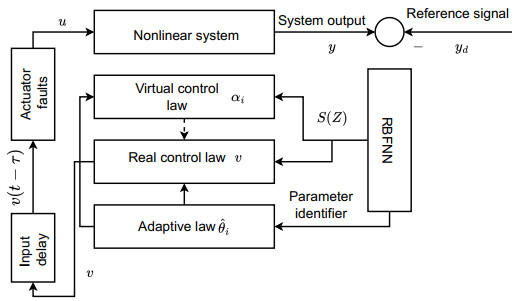









 DownLoad:
DownLoad:















